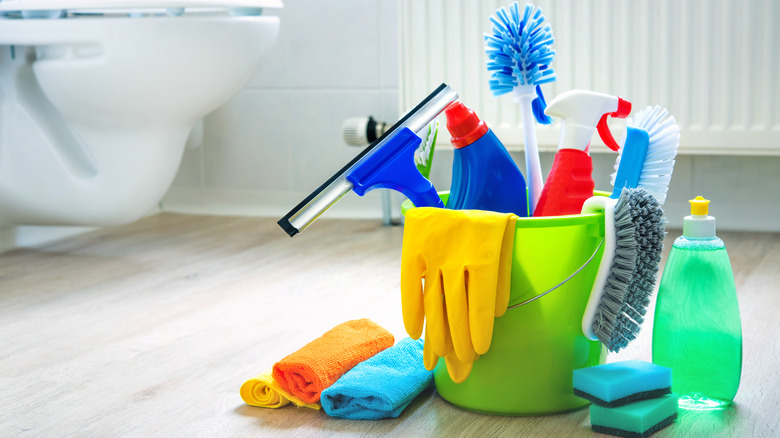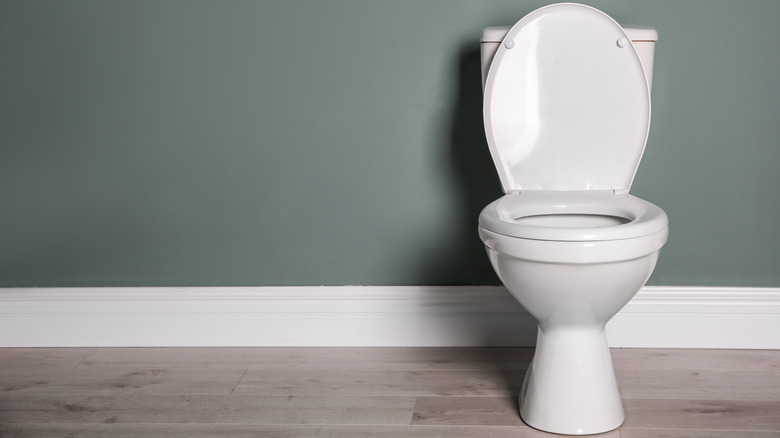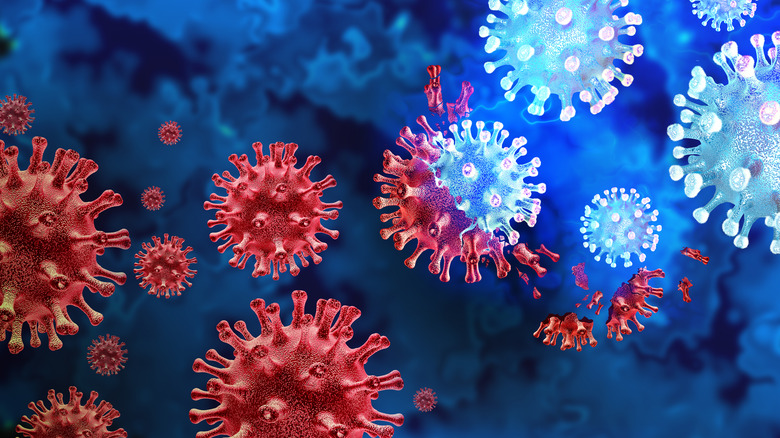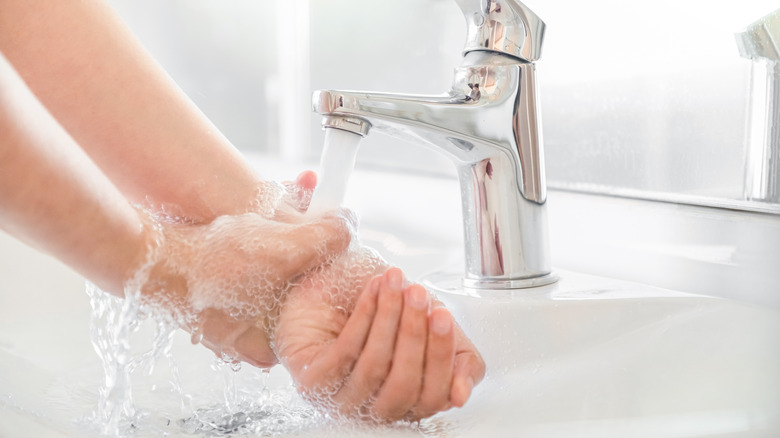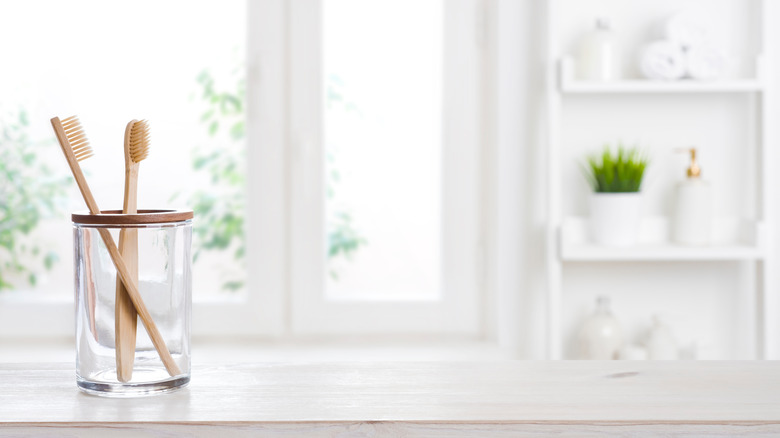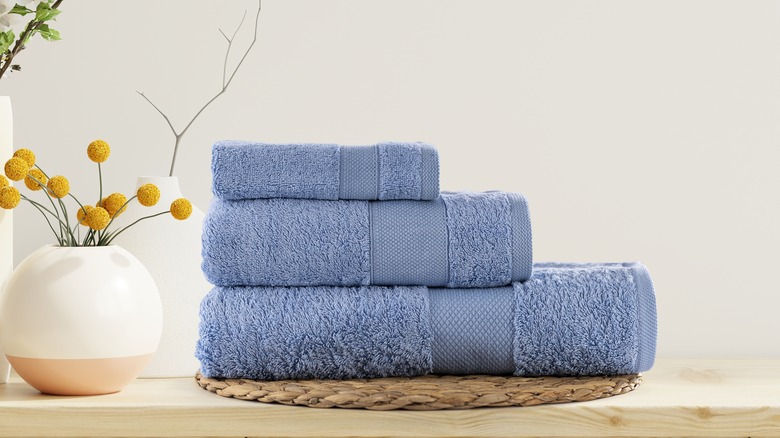Unhygienic Bathroom Mistakes You're Probably Guilty Of
We all want to keep our homes clean and hygienic, but sometimes we make unhygienic bathroom mistakes without even realizing it. Most of us likely engage in behaviors that can lead to bacteria and germs lingering, putting ourselves and others at risk. Having a clean and germ-free bathroom is essential for maintaining a healthy lifestyle. Not only does it help to keep us free from any illnesses, but it can also make us feel more relaxed and comfortable when using the bathroom. A hygienic bathroom is also beneficial for those with allergies or asthma since mold is responsible for a wide range of allergic reactions, according to The American College of Allergy, Asthma & Immunology.
Therefore, it's important to minimize their exposure by keeping everything clean and free from dirt and dust particles which may trigger an allergic reaction. Let's go over some of the most common hygiene mistakes we make in the bathroom and how to avoid them. These simple steps will help you stay healthy and safe from illnesses caused by nasty germs in an unclean environment.
Flushing with the toilet lid open
Flushing the toilet with the lid closed is an important practice that should not be overlooked. It helps reduce the risk of spreading germs and bacteria in the air, leading to various illnesses, such as influenza and other respiratory infections. When a person flushes the toilet without closing the lid, contaminated particles in the water can disperse into the air and land on surfaces, where they pollute anything they come into contact with on their way down. This increases the chance of passing on bacteria, adversely affecting your family or anyone else who uses your bathroom.
Microbiologist Dr. Janet Hill revealed to TODAY, "The bigger droplets and the aerosol likely don't travel very far above or around the toilet, but very tiny droplets could remain suspended in the air for some time. Since the water in the toilet bowl contains bacteria and other microbes from feces, urine and maybe even vomit, there will be some in the water droplets. Every gram of human feces contains billions and billions of bacteria, as well as viruses and even some fungi."
In addition to reducing the spread of germs and bacteria, closing the toilet lid when flushing also helps to keep unpleasant odors from entering your home. The force from a flush sends up aerosolized particles full of microbes, which can cause an unpleasant smell throughout your house. Additionally, closing the lid prevents splashing around your bathroom, which can result in water damage in areas like walls, floors, cabinets, and countertops if it isn't properly addressed.
Not disinfecting surfaces
One of the most common unhygienic mistakes you can make is not cleaning your bathroom surfaces properly. It's easy to give them a quick wipe down with a cloth or brush, but that won't get rid of all the germs and bacteria present. When cleaning and disinfecting your bathroom, you need to take a few key steps to ensure that all surfaces are free from harmful bacteria and germs. First, remove all dirt and debris. This can be done by wiping the counters, toilet, sink, and faucets with soap and water or using a multi-surface cleaner. Use a microfiber cloth or disposable paper towel to help lift particles from hard-to-reach places like grout lines. Once all the surfaces have been wiped down, you can disinfect them.
Good Housekeeping suggests using an anti-bacterial cleaner and scrub brush to help remove any stubborn dirt or grime to ensure your toilet, sink, and counters are free of potentially harmful bacteria. Try disinfecting your toilet seat and handle for added protection against germs. Finally, make sure your bathroom surfaces are completely dry before putting anything back in place. Bacteria love moisture, so any dampness left behind could invite more germs into your home environment.
Improper hand washing
One of the most common mistakes people make when using a restroom is not washing their hands properly. Often, people will rush through or skip handwashing altogether, leaving them vulnerable to picking bacteria and germs from surfaces they touched while using the bathroom. According to the CDC, improper handwashing after using the washroom can quickly transmit fecal matter and spread illnesses like norovirus or E. coli, whether between people or through contact with contaminated food, surfaces, or objects.
It's important to use soap rather than just water, as soap will break down the oils and dirt on your skin, helping to remove germs or bacteria. Massage the soap into all parts of your hands, including between each finger and around your fingernails. This should take at least 20 seconds (or two rounds of singing "Happy Birthday") and guarantee you've removed any bacteria from your hands. Rinse off all the soap until no more suds remain on your hands. Dry off using a clean towel or paper towel, as this will help prevent any moisture from staying on your skin.
Using a dirty toothbrush
We all know how important it is to brush our teeth regularly, but many of us forget about replacing our toothbrushes when they become worn out or frayed. This can lead to bacteria buildup on your toothbrush bristles, which can then transfer onto your teeth and gums when brushing. To prevent this from happening, it's best practice to replace your toothbrush every three months or sooner if you notice any wear.
A 2011 study found that 64% of toothbrush holders contained mold and yeast, making them even dirtier than toilet seats. Some also contained coliform and staph. Lisa Yakas, a microbiologist at NSF International, told Time, "The toothbrush holder often has many of the factors germs need," adding, "It is dark, damp and not cleaned as frequently as it should be." Keep your toothbrush and toothbrush holder clean by rinsing your toothbrush with hot water after every use, scrubbing off any remaining particles or plaque. You should also clean your toothbrush holder at least once a week using warm soapy water, making sure to get into all the nooks and crannies where dirt can build up. Your toothbrush should be stored upright in a dry place — ideally in a closed cabinet where it will come into contact with fewer germs rather than on the countertop.
Not washing your towels often enough
Your body is clean when you use a bath towel, so it can't possibly get that dirty ... right? Unfortunately, that's not the case. The damp environment of the bathroom provides ideal conditions for bacteria and fungi to grow and multiply, which can transfer to your skin when you use the towel. Common contaminants on a dirty towel are Staphylococcus aureus (staph) bacteria, which can cause skin infections; Enterococcus faecalis (fecal bacteria), which causes digestive issues; Pseudomonas aeruginosa, which causes eye infections; and Candida albicans, which is responsible for yeast infections.
Washing your towels frequently can help prevent the build-up of bacteria and reduce the risk of any odors forming. According to Healthline, towels should be washed with hot water after every three uses to properly sanitize them and keep them free from harmful pathogens. Ensure the towel is completely dry before using it again because damp towels are more prone to harboring bacterial growth than dry ones. If possible, it is best to avoid using fabric softener or dryer sheets when drying your towels, as these products can reduce their absorbency over time. For best results and a fresher-smelling towel, add ½ a cup of white vinegar alongside detergent during a cycle; this will also help eliminate any excess detergent residue that may have been left behind.

